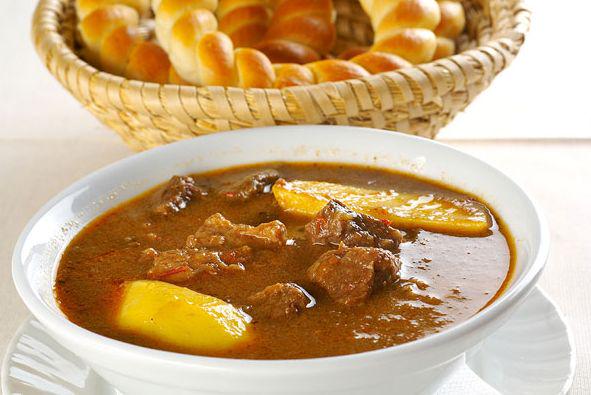
The Slovenian region of Prekmurje spent hundreds of years under Hungarian rule and is still populated by a sizeable Hungarian community. That legacy is evident in many facets of the local culture, including one of the most famous dishes of the area – a stew known as bograč.
The recipe for bograč developed over the centuries. The stew is very similar to goulash, but several elements make it unique. Traditional bograč contains potatoes, onions, pork fat, and four different types of meat – often beef, pork, venison, and wild boar –, as well as a peppers, a touch of wine, and various spices. The stew is then cooked on an open fire – preferably outdoors – in a pot the Hungarians call “bogracs” – hence the name of the dish.
In recent years, many Slovenian regions have been rediscovering their traditional recipes, and bograč has become one of the best-loved symbols of Prekmurje, while Lendava, a binational town near the Hungarian border, has claimed the title of Bograč Capital of the World. What was once a simple everyday dish is now served in restaurants across Slovenia.
Late each summer, Lendava organizes Bogračfest– a festival dedicated to the stew. Visitors from across Slovenia and beyond flock to the town to taste traditional bograč that has been prepared by the best local chefs using traditional techniques. More than 100 teams compete to create the best bograč in the world. Many of the cooks at the festival are amateurs: In 2015, for instance, the grand prize went to cooks representing the local motoring club.
Since Prekmurje is also a wine-growing region, various local wines are also served at Bogračfest. The festival has emerged as a popular tourist draw in a region still discovering its tourist potential, but the celebration also keeps an important element of local heritage alive for generations to come.


































































